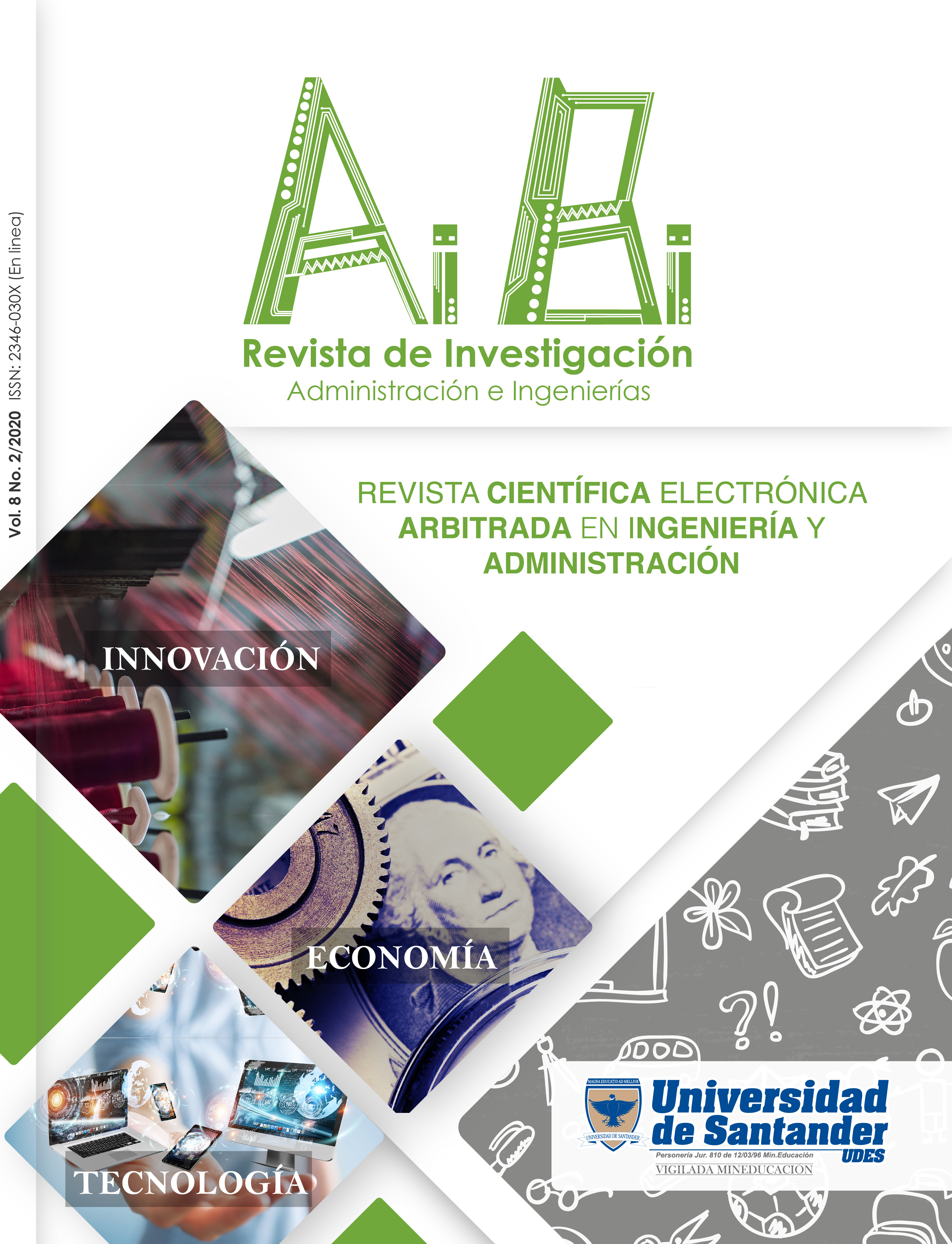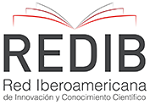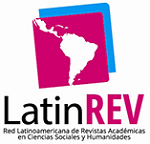Information management needs in an app for coffee famers: a case study.
DOI:
https://doi.org/10.15649/2346030X.739Keywords:
mobile application, agriculture, case study, information technologyAbstract
Advances in information technology (IT) have become a determining factor for increasing the efficiency and productivity of
various economic sectors. However, in the agricultural sector, especially in Latin America, it has not fully benefited from these advances. This
research intends, by the case study methodology, to determine what the potential benefits of an agricultural application would be, from the point
of view of different actors in the coffee production chain. The research allowed to identify the potential benefits of an application of this type:
(i) generate an alert system for agricultural tasks; (ii) help calculate the profits generated; (iii) provide information on the weather and the sale
prices of the crops; (iv) have a register that allows the traceability of the coffee delivered; and (v) inform the producer of the quality of the coffee
he delivered. Finally, some limitations were identified, such as the low digital level of some of the potential users and the restricted Internet
connection in some areas where the population studied is located
References
Organización Internacional del Café, “Informe del mercado de café enero 2019,” 2019.
Legiscomex, “Ranking de los prinicpales productos exportados por Colombia 2016,” 2016.
Federación Nacional de Cafeteros, “Colombia es Café,” Al grano, p. 1, 2011.
Reuters, “Colombia empieza a perder área cultivada de café por bajos precios,” Noticias Nacionales, 2019.
DANE, “Tercer Censo Nacional Agropecuario,” Bogotá, 2016.
E. Cristancho y C. Uribe, “Inversiones en ciencia, tecnología e innovación para el sector pecuario por parte del Ministerio de Agricultura y Desarrollo Rural, Colombia,” Rev. Colomb. Ciencias Pecu., vol. 20, no. 4, p. 10, 2007.
M. Cotteleer y E. Bendoly, “Order lead-time improvement following enterprise information technology implementation: an empirical study,” MIS Q., vol. 30, no. 3, pp. 643–660, 2006.
R. Santhanam y E. Hartono, “Issues in linking information technology capability to firm performance,” MIS Q., vol. 27, no. 1, pp. 125–153, 2003.
S.M. Huang, C.S. Ou, C.M. Chen, y B. Lin, “An empirical study of relationship between IT investment and firm performance: A resource-based perspective,” Eur. J. Oper. Res., vol. 173, no. 3, pp. 984–999, Sep. 2006.
A. Bharadwaj, “A resource-based perspective on information technology capability and firm performance: an empirical investigation,” MIS Q., vol. 24, no. 1, pp. 169–196, 2000.
S. Nevo y M. Wade, “The formation and value of it-enabled resources: Antecedents and consequences,” Manag. Inf. Syst. Q., vol. 34, no. 1, pp. 163–183, 2010.
N. Melville, K. Kraemer y V. Gurbaxani, “Review: Information technology and organizational performance: An integrative model of IT business value,” MIS Q., vol. 28, no. 2, pp. 283–322, 2004.
S. Mithas, N. Ramasubbu y V. Sambamurthy, “How Information Management Capability Influences Firm Performance.,” Mis Q., vol. 35, no. 1, pp. 1–15, 2011.
G. Bhatt y V. Grover, “Types of information technology capabilities and their role in competitive advantage: an empirical study,” J. Manag. Inf. Syst., vol. 22, no. 2, pp. 253–277, 2005.
B. Dehning y T. Stratopoulos, “Determinants of a sustainable competitive advantage due to an IT-enabled strategy,” J. Strateg. Inf. Syst., vol. 12, no. 1, pp. 7–28, Mar. 2003.
S. Karetsos, C. Costopoulou y A. Sideridis, “Developing a smartphone app for m-government in agriculture,” J. Agric. Informatics, vol. 5, no. 1, pp. 1–8, 2014.
J. Nagel, “Principales barreras para la adopción de las TIC en la agricultura y en las áreas rurales,” Nac. Unidas - CEPAL, p. 54, 2012.
J.C. Aker y I.M. Mbiti, “Mobile Phones and Economic Development in Africa,” Mob. Phones Econ. Dev. Africa, no. June 2010, pp. 1–43, 2010.
A. Gikandi-Muriithi, E. Bett y O.A. Sarah, “Information Technology for Agriculture and Rural Development in Africa: Experiences from Kenya,” Conf. Int. Res. Food Secur. Nat. Resour. Manag. Rural Dev., 2009.
M.L. Iraba y I.M. Venter, “Empowerment of rural farmers through information sharing using inexpensive technologies,” in SAICSIT, 2011, pp. 279–282.
S. Mittal, S. Gandhi y G. Tripathi, “Socio-Economic Impact of Mobile Phones on Indian Agriculture Surabhi Mittal Sanjay Gandhi Gaurav Tripathi,” Indian Counc. Res. Int. Econ. Relations, vol. 33, no. 246, p. 48, 2010.
S. Bhatnagar y R. Schware, “Information and communication technology in rural development,” Case Stud. From India, World Bank Inst., pp. 1–192, 2000.
R. Chakravarty, “IT at Milk Collection Centers in Cooperative Dairies : The National Dairy Development Board Experience,” Inf. Commun. Technol. Dev. Cases from India, pp. 37–47, 2000.
S. Cecchini y M. Raina, “Warana: the case of an Indian rural community adopting ICT,” Inf. Technol. Dev. Ctries., 2002.
S.M.M. Rashid, M. Haque y R. Islam, “Does e-agriculture impact on farmers’ empowerment in Bangladesh?,” Int. J. Agric. Ext., vol. 4, no. 1, pp. 87–94, 2016.
C.Z. Qiang, S.C. Kuek, A. Dymond y S. Esselaar, “Mobile Applications for Agriculture and Rural Development,” World Bank, no. December, pp. 1–120, 2011.
D. F. González, A.M. Hernández y L. Machuca, “Sistema de información móvil para procesos de producción de semillas en bancos de recursos genéticos, caso de estudio CIAT,” Rev. Ing. Univ. Medellín, vol. 15, no. 28, pp. 197–216, 2016.
C. Rodríguez-Lemus, L.R. Valencia-Pérez y J.M. Peña-Aguilar, “Aplicación de las TI’s a la Cadena de Valor Agrícola para Productores de Agricultura Protegida,” Rev. Tecnol. en Marcha, vol. 31, no. 1, p. 181, 2018.
E.D. Seeman y M.O. Hara, “Customer relationship management in higher education : Using information systems to improve the student-school relationship,” Campus-wide Inf. Syst., vol. 23, no. January, pp. 24–34, 2006.
S.G. Sutton y V. Arnold, “Focus group methods: Using interactive and nominal groups to explore emerging technology-driven phenomena in accounting and information systems,” Int. J. Account. Inf. Syst., vol. 14, no. 2, pp. 81–88, 2013.
H. Varonen, T. Kortteisto y M. Kaila, “What may help or hinder the implementation of computerized decision support systems ( CDSSs ): a focus group study with physicians,” Fam. praactice, no. June, pp. 162–167, 2008.
A.M.M. Correa, A.V. Vinchira y M.M.G. Velásquez, “Gestión del conocimiento científico en la Universidad de Antioquia: integración de herramientas para la formulación de una estrategia,” Innovar, vol. 28, no. 68, pp. 71–84, 2018.
C. de-Pablos-Herederos, J.J. López-Hermoso-Agius, S. Martín-Romo-Romero y S. Medina-Salgado, "Organización y transformación de los sistemas de información en la empresa", 4a ed. Madrid: Esic, 2018.
R.S. Pressman, "Ingeniería del Software. Un enfoque práctico", 7th ed. México DF: Mc Graw-Hill, 2010.
I. Sommerville, "Ingeniería del Software", Seventh. Madrid, 2005.
G. Booch, J.E. Rumbaugh y I. Jacobson, "El lenguaje unificado de modelado", 2nd ed. España: Pearson Educación S.A, 2006.
IEEE, "IEEE Standard Glossary of Software Engineering Terminology", First. New York, 1990.
A. Holzer y J. Ondrus, “Mobile application market: A developer’s perspective,” Telemat. Informatics, vol. 28, no. 1, pp. 22–31, 2011.
L. Cardelli, “Mobile ambients (redundant),” Theor. Comput. Sci., vol. 240, no. 1, pp. 177–213, 2000.
S.L. Jarvenpaa y K.R. Lang, “Managing the paradoxes of mobile technology,” Inf. Syst. Manag., vol. 22, no. 4, pp. 7–23, 2005.
P. Korpipää, J. Mäntyjärvi, J. Kela, H. Keränen y E.J. Malm, “Managing context information in mobile devices,” IEEE Pervasive Comput., vol. 2, no. 3, pp. 42–51, 2003.
R. Ratna, “The Effect of Perceived Service Quality and Trust on Loyalty: Customer’s Perspectives on Mobile Internet Adoption,” Int. J. Innov. Manag. Technol., vol. 2, no. 4, pp. 286–290, 2011.
World Bank, “Mobile cellular subscriptions,” International Telecommunication Union, World Telecommunication/ICT Development Report and database, 2017. [En Linea] Disponible en: data.worldbank.org/indicator/IT.CEL.SETS.P2?view=map.
K. Eisenhardt, “Building theories from case study research,” Acad. Manag. Rev., vol. 14, no. 4, pp. 532–550, 1989.
C. Voss, N. Tsikriktsis y M. Frohlich, “Case research in operations management,” Int. J. Oper. Prod. Manag., vol. 22, no. 2, pp. 195–219, 2002.
A.J. Onwuegbuzie, W.B. Dickinson, N.L. Leech y A.G. Zoran, “A Qualitative Framework for Collecting and Analyzing Data in Focus Group Research,” Int. J. Qual. Methods, vol. 8, no. 3, pp. 1–21, 2009.
T.C. Lethbridge, S.E. Sim y J. Singer, “Studying software engineers: Data collection techniques for software field studies,” Empir. Softw. Eng., vol. 10, no. 3, pp. 311–341, 2005.
D.W. Stewart, P.N. Shamdasani y D.W. Rook, "Focus Group: Theory and Prectice", 2nd ed. Sage Publications, 2007.
R. Hernández, C. Fernández y P. Baptista, Metodología de la investigación, 6th ed., vol. 53, no. 9. Mc Graw-Hill, 2014.
J. Kontio, L. Lehtola, J. Bragge y P. O. Box, “Using the Focus Group Method in Software Engineering : Obtaining Practitioner and User Experiences,” in International Symposium on Empirical Software Engineering IEEE, 2004.
M. Mendoza, C. González y F.J. Pino, “Focus Group Como Proceso En Ingeniería De Software: Una Experiencia Desde La Práctica.,” DYNA, vol. 80, no. 1, pp. 51–60, 2013.
Downloads
Published
How to Cite
Issue
Section
Altmetrics
Downloads
License
The journal offers open access under a Creative Commons Attibution License

This work is under license Creative Commons Attribution (CC BY 4.0).












